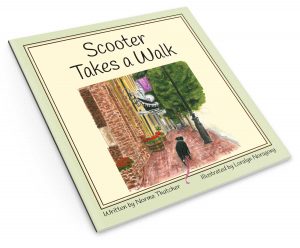
Photo courtesy of Erik Lucatero / Unsplash
I just Googled this query: Is it still OK to use the word cool?
In less than one second there were 145 million results. Some “experts” say YES, some say NO, and Mauro Porcini (who at least in 2016 was Chief Design Officer at PepsiCo) said, “It’s not cool anymore to define as cool something that is cool.” Got it?
Anyhow, I find it quite cool to read something by a famous speaker that mirrors a concept I teach.
I subscribe to Jon Acuff’s writer’s blog. Last Wednesday Jon talked about working with a speech coach. He said, “One thing she taught me that I have never forgotten is the concept of “Talking to a person, not a crowd.”
My version of that concept is Talk to one person at a time.
It doesn’t matter if your audience is five people, fifty, or five hundred.
As you give your presentation, really look at one smiling face and say several words, a phrase, or even a sentence. Then gently move your eyes to another face in an area close to the first and speak directly to a second person, again for several words, a phrase, or a sentence.
As you move or shift your position slightly, move on to other areas of the room and find someone else to talk to. Keep doing this throughout your presentation. Don’t plan ahead as to “who’s next” – just let the process unfold naturally.
Even if the audience is so large that you can’t possibly speak to each individual, picking out one face lets the people in that area feel as though you are speaking to them as well. And when you make a connection with one person, really talking to them, it creates a sense in the audience that you are connecting with each of them.
Also, if you’re speaking to a crowd, be sure you’re not catching just the first few rows. Speakers who talk only to the folks in the front of the room will lose the interest of the people farther back.
I attended a presentation recently where the speaker didn’t use a single note. He just stood up and talked. His material was magnificent.
But he made the mistake of flitting his eyes around the room. It was great that he didn’t talk to a screen with PowerPoint plastered on it, and it was fantastic that he knew his material so well that he wasn’t reading to us. He turned his head in every direction of the room, but only for a split second at a time. It felt as though he was talking at us instead of to us. That diminished the effectiveness of his presentation.
This is where Talk to one person at a time becomes so effective. The speaker is no longer aloof, focusing only on his material. Rather, the message is being delivered to individuals instead of to the crowd. The audience gets a clear sense that they matter to the speaker.
Since the audience is always the most important person in the room, it’s fantastic when a speaker honors his or her audience by using this method to remind them of that fact.




You were obviously paying closer attention to Mrs. Peters during our speech classes in high school, Norma. I wish I could have taken your classes back when I had to speak in front of an auditorium full of students and faculty. It never became easy for me. Your advice is wonderful and I think it would have helped me . I am always that person in the crowd that makes eye contact with the speaker because I have so much empathy for them and want to put them at ease.
You touch on a point that I just taught at a class yesterday: Be a nice audience member. Maintain eye contact with the speaker, smile, laugh if he/she tells an amusing story, nod your head when you agree with a point. Speakers DO seek out that understanding face; thanks for being one of them.
Norma:
I have used this as my modus operandi, when I’m singing. I have ALWAYS maintained that I can not “Minister in Music” with my nose stuck in a book, and that’s why I always have my solos memorized before performing them. The congregation tells me that my words mean so much more to them, because I have eye contact with everyone in the auditorium. It also puts me at ease to feel their response/reaction to my message in song.
This is a terrific tie-in between speaking and singing. Having been the fortunate recipient of your music, it does indeed mean so much more when you are connecting with your audience.
Years ago I was practicing a presentation out loud at home (thinking I was alone in the house). I had just said, “Remember, eyes are a window to the soul.” Tim (then a young teen) popped around the corner from the kitchen (he must have been eavesdropping) and said, “If eyes are a window to the soul, then a smile is the front door.”
A moment in time never forgotten.
This is a really cool article ? I love how you tied “look at me when you’re talking ” into a public speaking tool. Great life lesson too as we need to “connect ” with people to make a difference. I really enjoyed this article. Thanks for writing it❤️
Thanks for being a first time commenter. And yes, we cannot connect with others if we’re paying “lip service” attention to the other. Someone once defined this as “attention deficit of the soul.”
I think this is excellent advice! When I think back to great speakers, I realize, they actually did this. It made it feel more personal to me.
Another first time commenter that I’m happy to welcome! My writing, then your reading and commenting, is another way of keeping in touch.
I attended recently a presentation where the speaker not only delivered most of her presentation via slides, but also read the slides’ content as she went along. She lost most of us very promptly, which was a shame considering how wonderful she and her subject were.
And this is why I warn my students and audiences AGAINST using PowerPoint. My guess is that most of us have sat through too many presentations where the speaker turned and read from the screen (as though the SCREEN were the audience!). I’ve mentioned before a super funny four minute video about death by PowerPoint but it’s worth repeating. https://www.youtube.com/watch?v=MjcO2ExtHso